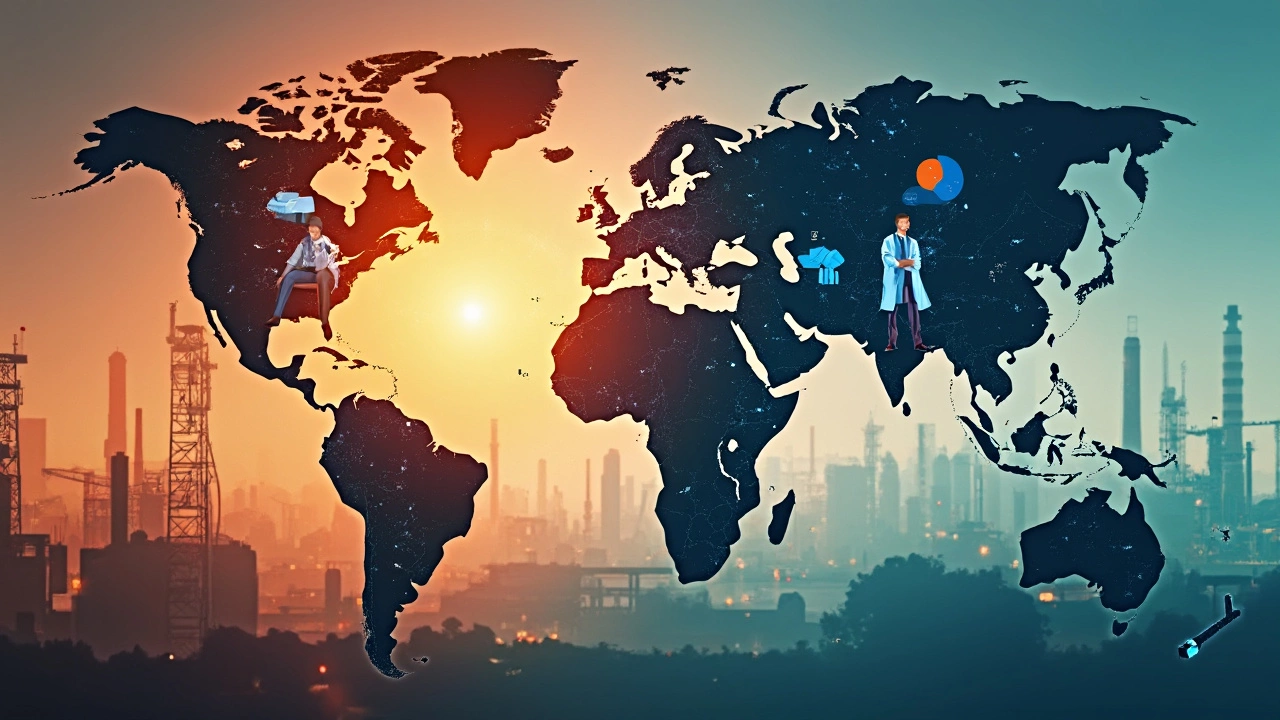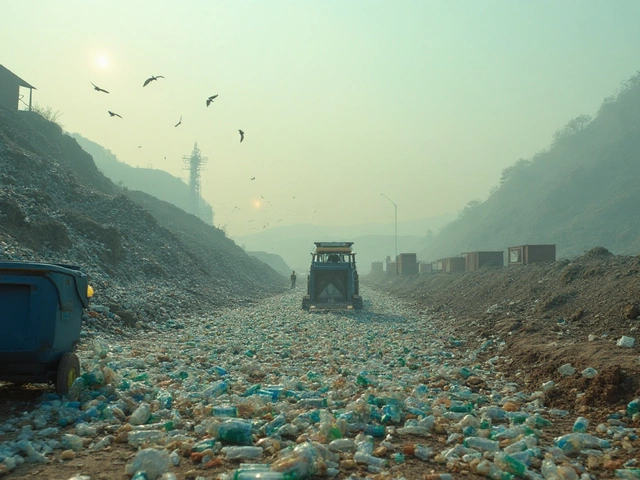If you look at almost anything in your house, it probably has a chemical company behind it. But ever wondered which country actually has the most chemical companies? The world’s chemical industry is massive—touching everything from your daily toiletries to the batteries in electric cars.
Here’s something that might surprise you: China tops the list when it comes to the number of chemical companies, especially big manufacturing plants. According to the latest surveys and trade reports, China’s dominance isn’t just about sheer numbers. They push out a huge volume of chemicals, and these companies serve customers worldwide—from small cleaning businesses to mega electronics giants.
But China isn’t the only player. The United States and Germany are chemical powerhouses, too. The US is stacked with both new startups and old-school giants (think Dow and DuPont). Germany, driven by titans like BASF, runs on innovation and strict quality standards. Each of these countries leads in different ways—scale, technology, or specialization.
- Where Chemical Companies Are Concentrated
- Why Certain Countries Lead
- India’s Role in the Chemical Industry
- Rising Trends and Opportunities
Where Chemical Companies Are Concentrated
Chemical companies aren't evenly spread across the world. Certain countries pack in more producers, either because they’ve got cheap resources, easy export routes, or just a long history in the business. Let’s get specific about where the real action happens.
Chemical manufacturers India stands out for sheer growth, but if we’re talking about raw numbers, China is way ahead. China’s chemical sector has exploded in the last 20 years. Today, China is home to tens of thousands of chemical plants, both big names and smaller factories. It’s not just about quantity—many of these plants are massive and handle all sorts of chemicals, from everyday plastics to specialty solvents for tech gadgets.
The United States comes in strong too. Think Texas and Louisiana—both are known for their chemical corridors. Major global brands started here, and the US continues to lead in innovation because of its research links and product diversity. Then there’s Germany, with giants like BASF and Bayer anchoring a network of specialty and bulk chemical firms. Even with high wages, Germany’s focus on high-quality manufacturing keeps it ahead.
If you’re curious how these country stacks look next to each other, here’s a simple comparison:
| Country | Estimated Number of Chemical Companies | Major Chemical Sectors |
|---|---|---|
| China | 40,000+ | Basic chemicals, pharmaceuticals, plastics, electronics |
| United States | 13,000+ | Polymers, agrochemicals, specialty chemicals |
| India | 10,000+ | Agrochemicals, dyes, pharmaceuticals |
| Germany | 2,000+ | Industrial chemicals, coatings, pharmaceuticals |
Notice how India’s number isn’t far behind the US, even if output is a bit lower right now. Japan, South Korea, and Brazil also have strong chemical industries, often focused on specific products or regional needs.
If you’re hunting for suppliers or research partners, a tip: Asia leads in bulk production, but Europe and the US offer more in high-tech, regulated, or specialty chemicals. Location often decides cost, lead times, and what’s possible, so it pays to know where the clusters are.
Why Certain Countries Lead
So, why do some countries always show up on top of the list for chemical companies? It’s not just about having a lot of people or factories. There are some very specific reasons why China, the US, and Germany dominate the chemical industry.
The biggest factor is easy access to raw materials. China has a massive reserve of minerals and coal, plus deals with countries that bring in oil and gas. The US is loaded with natural gas thanks to its shale revolution. Germany, on the other hand, has a huge focus on engineering and skilled workers, helping their companies bounce back even when prices go up elsewhere.
Strong local demand also matters. China’s giant manufacturing sector uses everything from plastics to specialty chemicals. The US has thousands of industries—from agriculture to electronics—all soaking up chemicals every day. Germany’s car and pharma sectors are chemical-hungry, and their exports pull in even more demand from around the world.
Check out this quick comparison for the countries leading the way:
| Country | Number of Major Chemical Companies | Share of Global Chemical Sales (%) | Specialty |
|---|---|---|---|
| China | 34,000+ | Nearly 40% | Bulk chemicals, fertilizers, plastics |
| United States | 13,000+ | About 15% | Petrochemicals, performance chemicals |
| Germany | 2,000+ | Over 5% | Specialty & pharma chemicals |
Government support plays a huge role. In China, the government invests billions into tech upgrades, safety, and environmental projects. The US gives big tax breaks and pushes public-private research partnerships. Germany’s chemical clusters get access to top universities and smart infrastructure, letting them work way more efficiently.
One thing these leaders all have in common? They’re always investing in new tech. China has poured money into greener production, the US has shifted toward digital manufacturing, and Germany practically sets the standard in chemical R&D. This keeps their chemical manufacturers India and elsewhere on their toes, racing to catch up or stay ahead.

India’s Role in the Chemical Industry
When you think about chemical manufacturers India, you need to picture a booming sector that’s grabbing attention. India stands as the world’s sixth-largest chemical producer and is ranked third in Asia, right after China and Japan. Just last year, India’s chemical industry was valued at over $220 billion—and it’s expected to grow at about 9% annually. Chemicals make up nearly 7% of India’s total GDP and bring in roughly 14% of the country’s total exports. That’s huge for any industry.
The country isn’t just about quantity—quality is a big focus now. The government has launched new Chemical Parks and "Make in India" initiatives to attract foreign investors and new manufacturers. There are more than 80,000 chemical products made in India, covering everything from simple solvents to high-tech specialty chemicals used in pharma and electronics.
“India is now viewed as a reliable, affordable alternative for specialty chemicals, especially with global supply chains shifting,” says a 2024 report by India Brand Equity Foundation (IBEF).
Major hubs include Gujarat, Maharashtra, and Tamil Nadu—states with easy port access and industrial clusters that make it simple to move goods in and out. Gujarat alone handles over 60% of the country’s chemical output.
| State | Share of Total Production (%) | Main Chemical Segments |
|---|---|---|
| Gujarat | 60 | Pesticides, fertilizers, specialty chemicals |
| Maharashtra | 16 | Polymers, dyes, resins |
| Tamil Nadu | 7 | Petrochemicals, fine chemicals |
| Others | 17 | Various |
If you’re thinking about doing business or finding suppliers, check if they’re certified by key agencies like the Gujarat Industrial Development Corporation (GIDC) or export councils. It’s also worth following tariffs and new government policies. These can mean big chances for new deals or partnerships.
- India is the world’s largest producer of dyes.
- It dominates agrochemicals in Asia, second only to China globally.
- India has over 10,000 registered chemical manufacturing units.
With global companies reducing dependency on one region, India’s flexibility and scale are pushing it to the center of the chemical industry conversation. If you keep an eye on this sector, you’ll spot plenty of new opportunities in the coming years.
Rising Trends and Opportunities
The chemical industry is changing fast, and it’s not all about the old-school giants anymore. One of the biggest shifts right now is towards sustainability. More companies are ditching dirty processes and investing in green chemistry to cut pollution and energy use. By 2024, nearly 40% of global chemical R&D budgets went into sustainable materials and cleaner production techniques. Companies that move early have a head start with regulators and customers who want eco-friendly supplies.
Digitalization is another big game-changer. Smart factories—using AI and data analytics—are popping up in China, India, and Europe. These tech upgrades aren’t just buzzwords. They help companies catch the tiniest process errors, control costs in real time, and even predict machinery breakdowns before anything goes wrong.
India is especially interesting for anyone eyeballing new opportunities. Local chemical manufacturers India are growing way faster than the global average. The Indian chemical sector is expected to hit $300 billion by 2025, with specialty chemicals (think pharma ingredients and electronics chemicals) leading the charge. This is a goldmine for startups and international investors looking for steady growth and fresh market space.
See what’s driving these trends in hard numbers:
| Trend | Growth Rate (2023-2025) | Notable Countries |
|---|---|---|
| Green Chemicals | 11% per year | Germany, India, US |
| Digital Process Automation | 14% per year | China, India |
| Specialty Chemicals | 9% per year | India, US |
| Global Chemical Exports | 7% per year | China, Germany |
Practical tip for anyone wanting to break into the market? Keep a close eye on government incentives. India is rolling out production-linked incentives (PLIs) for chemical manufacturing, and countries like Germany offer serious support for green tech upgrades. Small and medium businesses can plug into these programs to get an edge and cut upfront costs.








Write a comment